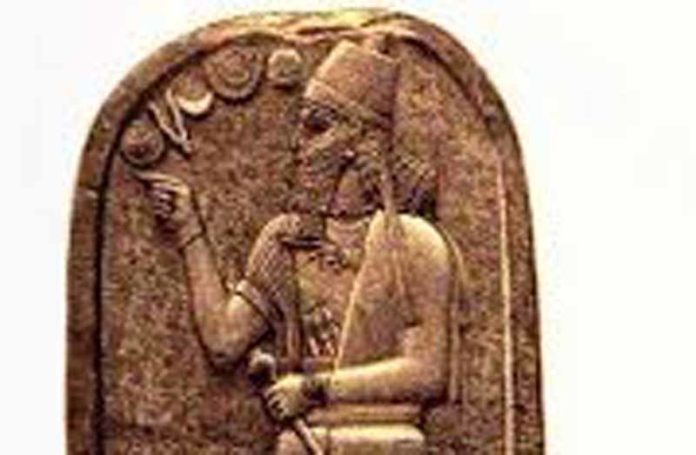
During The Late Bronze Age, while the major powers were preparing for war, an ambitious warlord built a kingdom on the Syrian coast.
During the later days of the rule of the Pharaoh Amenhotep III, or perhaps the early days of the Pharaoh Amenhotep IV/Akhenaton, the coastal region between Gubla/Byblos and Ugarit was united by a local chieftain known as Abdi-Ashirta. Although the record is not entirely clear on his origins, Abdi-Ashirta appears to have risen from among the local tribes and gained the support of a group of individuals known as the habiru. The exact nature of this group which joined with the Amorite chief is unknown and is a point of contention; their appearance can only be generalized as being a mix of brigands and freebooters. With such support Abdi-Ashirta began to implement his plan of uniting Amurru into a kingdom, something it had not been before.
The Land Of Amurru
What had been in Amurru prior to the ambitious warlords rise to power were several Egyptian garrisons, there to protect certain key resources that were in demand by the Egyptians. The primary Egyptian garrison was at Simurru/Sumur, on the coast, not quite halfway from Gubla to Ugarit when traveling northward. It was the eventual fall of this city which enabled Abdi-Ashirta to pose a very serious threat to his neighbors, and to begin to be perceived as such by the Pharaoh.
It is primarily from one of these threatened neighbors of the would-be Amorite King that we receive most of the incriminating evidence about his rise to power. By far, the most prolific writer to the Pharaoh concerning the adventures of Abdi-Ashirta was the ruler of Gubla, Rib-Hadda. Rib-Hadda was the hereditary ruler of Gubla and had been, as he often reminded any in ear shot of his messengers, the long time loyal vassal of the Egyptian Pharaoh. His overall contribution to the archive approaches 70 letters.
The Lore Of Abdi-Ashirta
All that is known of Abdi-Ashirta comes from the archive known as the Amarna Letters which were found in the ruins of Egypt’s one time capital city, Akhetaten. Complete understanding of this archive has been elusive. It is not clear at what point during the surmised chronology of the letters that the Pharaoh becomes Amenhotep IV/ Akhenaton who replaced his father Amenhotep III around 1350 B.C.E. Therefore the rise of Amurru has proved difficult to date with certainty. However, the use of petrographic analysis on the tablets themselves has been extremely helpful. This technique can place the origin of the letter based on the mineral content of the clay.
Petrographic Analysis Of The Amarna Letters
In particular to the story of Abdi-Ashirta, the petrographic data makes it possible to trace the territorial expansion of the kingdom of Amurru. This relative certainty about the events on the ground allows an examination of the political situation that can be more than speculative. It can now be ascertained that the last known correspondence from Abdi-Ashirta came from the city of Sumur. It is also possible to trace his conquests based on the location of earlier letters. Being able to place a time-line on his career is crucial in understanding the response of the Pharaoh to events that unfolded in distant Syria.
At first Abdi-Ashirta appears as little more than a bandit-lord, and his initial skill amounted to gaining the command of the habiru. With such groups of plunderers under his control, Abdi-Ashirta was able to intimidate more tribes into offering allegiance in exchange for protection from the very bandits he controlled. This strategy served him well as he expanded from the central mountains down into the foothills, where his base at Ardata gave him control over the Akkar plain. It was from this position of strength that Abdi-Ashirta moved upon Sumur, the seat of the local Egyptian Commissioner and his garrison.
Sources:
- Bryce, Trevor. (Letters of the Great Kings of the Near East. London: Routledge, 2003.)
- Mendenhall, George. (The Message of Abdi-Ashirta to the Warriors, EA 74 “Journal of Near Eastern Studies,” Vol. 6, No. 2. (Apr., 1947), pp. 123-124. April 27, 2007)
- Liverani, Mario.(International Relations in the Ancient Near East, 1600-1100 BC. New York: Palgrave, 2001)
- Moran, William H. (Amarna Studies; collected writings. Winona Lake: Eisenbrauns, 2003)
- Moran, William H. (The Amarna Letters. Baltimore: Johns Hopkins University, 1992)
- Yuval Goren; Israel Finkelstein; Nadav Naaman (The Expansion of the Kingdom of Amurru According to the Petrographic Investigation of the Amarna Tablets. Bulletin of the American Schools of Oriental Research, No. 329. (Feb., 2003), pp. 1-11. April 27, 2007)






